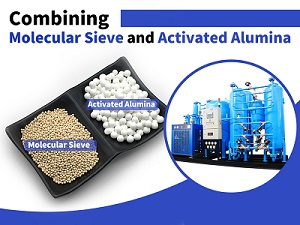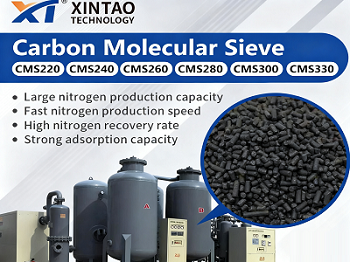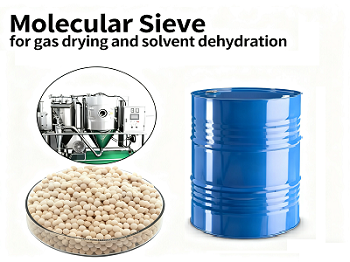Table of Contents
ToggleAnalysis of Common Failures of Carbon Molecular Sieve in Nitrogen Generator
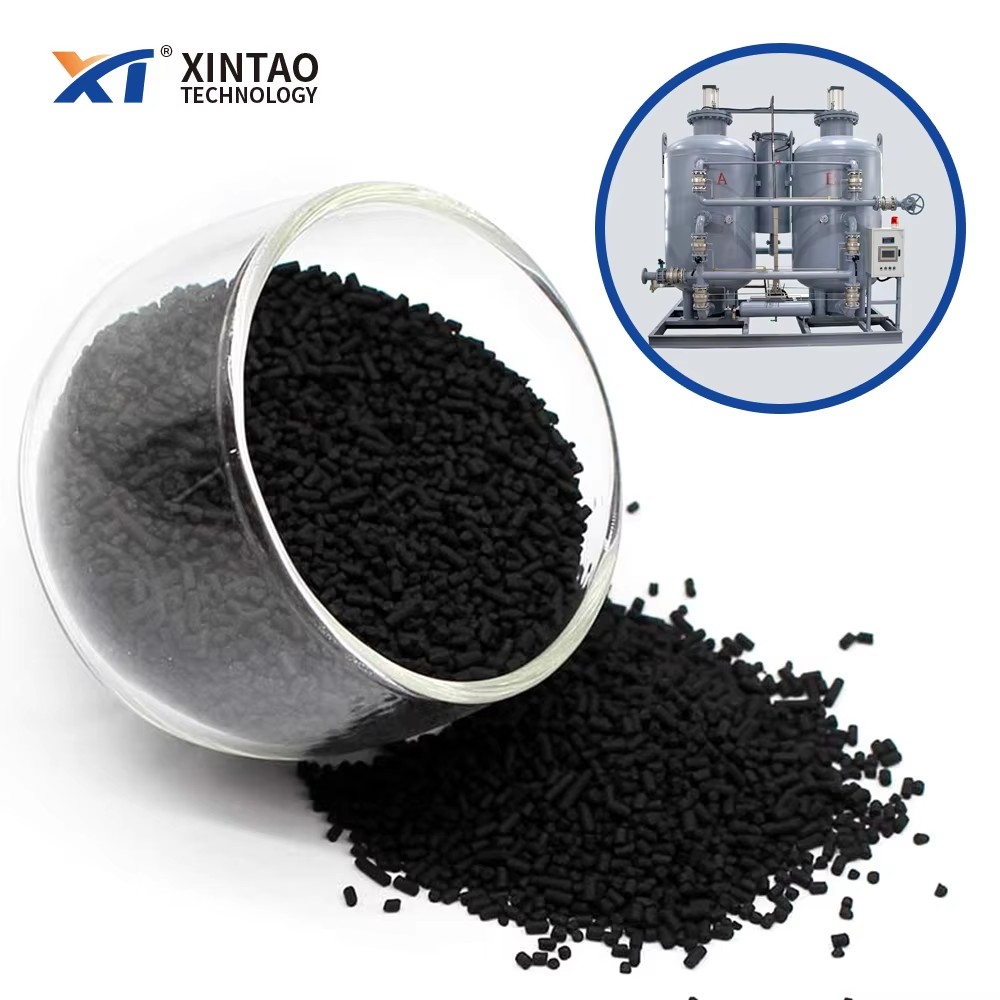
The main phenomenon of carbon molecular sieve leakage in nitrogen generators is that black smoke or even molecular sieve particles are emitted from the exhaust management during the oxygen-enriched exhaust process of the nitrogen generator. The pulverization of the molecular sieve and damage to the internal components of the equipment are the direct causes of the leakage of nitrogen generator powder.
1.1 Poor Quality Of Carbon Molecular Sieve
Carbon molecular sieve is an adsorbent that separates nitrogen and adsorbs oxygen. Its quality directly affects the performance of the nitrogen generator and the purity of the gas supply. Molecular sieves of good quality have better dust resistance, moisture resistance, strength, and adsorption than molecular sieves of general quality. Molecular sieves of poor quality have a short service life and aggravate pulverization during operation.
Xintao carbon molecular sieves are of superior quality, made of new raw materials and produced by its own process. They have high strength, low dust, are not easy to pulverize, and have a large nitrogen production capacity. They are trusted by customers at home and abroad.
1.2 Carbon Molecular Sieve Filling Is Not True
The nitrogen generator does not have professional filling vibration equipment when filling the zeolite carbon molecular sieve, resulting in low filling density of the molecular sieve inside the machine. When the nitrogen generator is running, the compressed air flows through the bottom of the tank and rises. After the oxygen is adsorbed by the molecular sieve adsorbent, the nitrogen is transported to the downstream pipeline. Due to the frequent impact of the airflow, the internal molecular sieve is aggravated, and the material level of the molecular sieve gradually decreases. When it drops to the lower limit of the top cylinder, the cylinder no longer compresses and restricts the molecular sieve, thereby accelerating the pulverization of the molecular sieve, causing the powder to pass through the filter and be emptied with the oxygen enrichment.
1.3 Gas Source Pressure
The purified compressed air enters the bottom of the nitrogen generator tower, and the gas supply pressure directly affects the working condition of the nitrogen generator. PSA nitrogen generators frequently pressurize and depressurize, and the pressurized gas will easily wear the carbon molecular sieve, so operators must strictly control the gas source pressure and flow rate. When the pressure is too high, the opening and closing of the pneumatic valve will increase the friction between the molecular sieves; if the pressure is too low, the molecular sieve will take longer to reach saturated adsorption, prolonging the nitrogen production cycle and accelerating the pulverization of the molecular sieve.
1.4 Pneumatic Valves Are Not Tight
The nitrogen generator pipeline is equipped with pneumatic fast-opening butterfly valve group, pressure equalizing valve group, exhaust valve group and vent valve group. Any valve group that is not closed tightly may cause airflow in another nitrogen generator that is temporarily not working. The surging of airflow will also increase the static friction between the carbon molecular sieves, exacerbating the pulverization of the molecular sieve.
1.5 Intake Moisture, Oil And Gas Lead To Failure
1.6 The Top Cylinder Is Not Tight
The low instrument air pressure, cylinder damage and low material level of the nitrogen generator are all reasons why the top cylinder cannot be pressed tightly. When the top cylinder is not tight, the cylinder no longer restricts the molecular sieve. After the airflow enters, it gives the molecular sieve a larger activity space, increases the impact force between the molecular sieves, accelerates the pulverization of the molecular sieve, and seriously affects the firmness of the internal structure of the equipment and aggravates the damage of the internal components of the equipment.
1.7 The Filter And Coconut Mat Are Broken
Due to the long-term impact of the airflow and molecular sieve, the middle part of the filter and coconut mat is damaged, causing the molecular sieve to fall to the bottom of the tank and leak out with the oxygen-enriched external exhaust pipe. If the damaged filter and coconut mat are not replaced in time, a vicious cycle will be formed, affecting the purity and flow of the product gas, and seriously affecting the stability and safety of the equipment operation.
Xintao Carbon Molecular Sieve
Xintao was founded in 2002. In the field of gas separation applications, we have more than 20 years of experience. We always adhere to the concept of creating value for customers and provide unique products, services, technical consulting and solutions for the global gas and gas equipment field. Xintao’s customers are all over the world, including Southeast Asia, the Middle East, Europe and South America, and its products are exported to more than 140 regions. Xintao carbon molecular sieves are widely used in petroleum, chemical, coal mining, metallurgy, tires, medical, food, aviation and other industries.
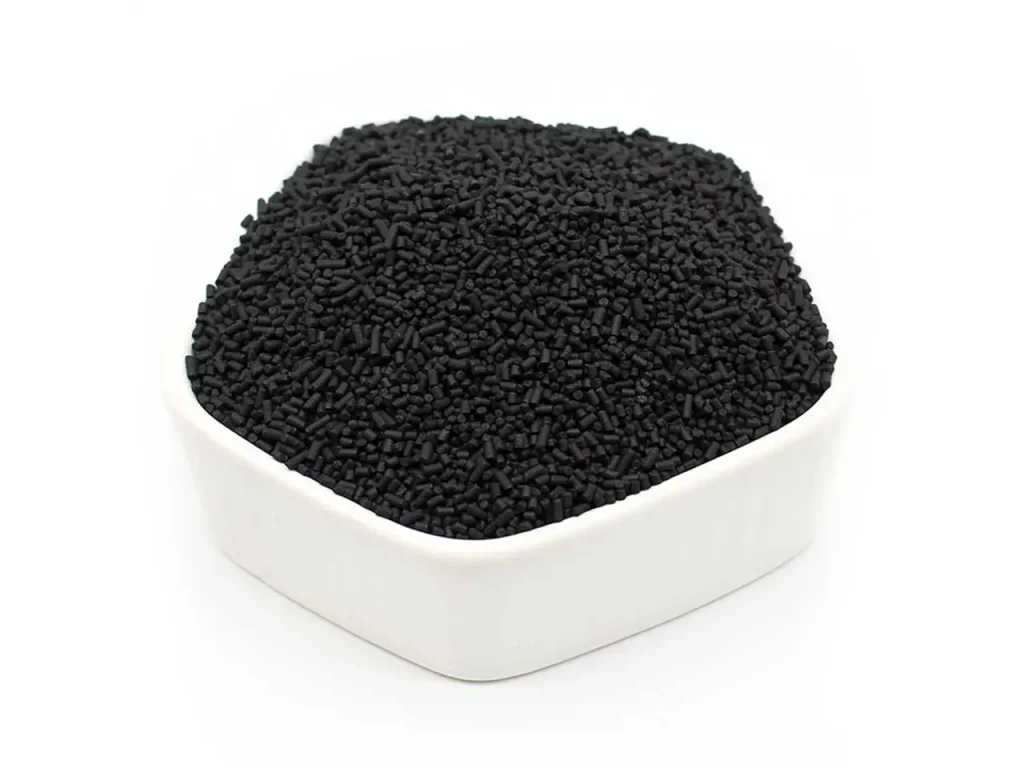
Carbon Molecular Sieve
Type: CMS-220/ CMS-240/ CMS-260/ CMS-280/ CMS-300/ CMS-330
Contact Xintao
If you have any question, please contact us!

